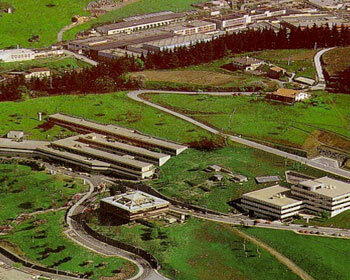How a Co-op ESOP Hybrid Works – If you missed this Feb. 21 webinar, you can now watch the recording here:https://vimeo.com/319063049You can also get the session materials, slides, and more here.Democratic ESOPs or ESOPs with co-op features has been a specialty of Deb Olson’s law practice for 38 years. Once Again Nut Butter Collective (OANB) is the featured example company in this webinar. OANB’s CEO, Bob Gelser, a worker board member, Scott Owens, and Deb, who is board chair of OANB will present on the two and ½ years of work that has led to the OANB participatory decision making system, and the history leading to it. Deb spoke about legal mechanisms and issues. Bob and Scott talked about the practical issues of making a participatory workplace of 80 people function efficiently. Chris Cooper of the Ohio Employee Ownership Center (OEOC) moderated.This event was cosponsored by the Groban Olson Law Firm, the Center for Community Based Enterprise (C2BE), the Ohio Employee Ownership Center at Kent State University (with support from the USDA's Rural Cooperative Development Program); Horizon Trust & Investment Management; and Once Again Nut Butter Collective, Inc.
Creative Community Pathways (CCP)
Creative Community Pathways (CCP), has created co-ops among the families of the children for whom it provides “individualized success plans. Families work together to get children to and from school and the many supportive resources in their program. The co-ops are organized and supported by CCP staff. Phyllis Williams, CEO of CCP developed these co-ops with advice from Atty. Olson. (More details coming soon.)
High Five Co-op Brewery
“For thousands of years people have met with  not much else between them besides a beer. And for just as long, beer has been a beverage of the people—a true democratic beverage. What more appropriate than to unite beer with the Co-operative model? With the shifting attitudes toward beer in United States, as well as the world, it only makes sense to work among the principles of a Co-op. High Five Co-op Brewery is not the first to make this step, and we will hopefully not be the last. While we are in formative stages, the future is exciting, and we invite you to join us, for there is work to do, beer to drink, and dreams to shape. We are proud to announce that as of today, the State of Michigan approved our Articles Of Incorporation and High Five Co-op Brewery, Inc. is now a Co-op. You can view our Articles Of Incorporation here. Our Bylaws have also been finalized, and we will be releasing them online shortly. This is fantastic progress and we can’t wait to announce more coming very soon.” -Quote from High Five Co-op Brewery Website.
not much else between them besides a beer. And for just as long, beer has been a beverage of the people—a true democratic beverage. What more appropriate than to unite beer with the Co-operative model? With the shifting attitudes toward beer in United States, as well as the world, it only makes sense to work among the principles of a Co-op. High Five Co-op Brewery is not the first to make this step, and we will hopefully not be the last. While we are in formative stages, the future is exciting, and we invite you to join us, for there is work to do, beer to drink, and dreams to shape. We are proud to announce that as of today, the State of Michigan approved our Articles Of Incorporation and High Five Co-op Brewery, Inc. is now a Co-op. You can view our Articles Of Incorporation here. Our Bylaws have also been finalized, and we will be releasing them online shortly. This is fantastic progress and we can’t wait to announce more coming very soon.” -Quote from High Five Co-op Brewery Website.
Mustard Tree Co-op
Mustard Tree Co-op is a 23 unit non-profit housing cooperative in Detroit’s Island View neighborhood, originally founded by Church of the Messiah. Attorney Olson helped them obtain their independent IRS 501(c)(3) status in the 1980’s and has represented them ever since.Church of the Messiah is an Episcopal church on Detroit's east side, an economically challenged area. When the neighborhood began to deteriorate in the late 1970's Pastor Ron Spann and parish members looked for ways to improve it. The apartment building at 215 E. Grand Blvd., immediately across the street from the church, was a source of neighborhood problems, including drugs and prostitution. In 1977, Richard Cannon became president of the Church of the Messiah Housing Corporation, through which the church bought the 23-unit building, andbegan renting to neighborhood people. It was always the desire of the Housing Corporation that the building be a co-op.In 1990 the building residents created the Mustard Tree Co-op and entered into a long-term mortgage to buy the building from the Housing Corporation for $650 per month.In 1997, the Housing Corporation wanted to sell the building outright to the residents’ co-op. It was then that the residents contacted Attorney Deborah Olson. Over the years, the co-op had retained 5% of the rent in a long-term capital improvement fund, which, by the time of the purchase had the $50,000 needed to purchase the building from the Housing Corporation.The co-op needed to formalize its existence and wanted to seek tax-exempt status. Atty. Olson successfully filed with the IRS for 501(c)3 tax-exempt status for Mustard Tree Co-op. She assisted the co-op in purchasing the building from the Housing Corporation. As a tax-exempt, non-profit the co-op is eligible for certain federal housing programs. However, the members do not build individual equity in the co-op.Since 1997, Atty. Olson has served as general counsel to the Co-op, dealing with a wide variety of issues.Sheree Walton, long-time president of Mustard Tree Co-op says, “The residents were overjoyed when we became owners of Mustard Tree through the co-op. We had many challenges and believed that co-op ownership was vital to preserving our community. We were looking for an attorney who had experience and was concerned about us. Atty. Deborah Olson has always been responsive, dedicated, thorough and cared about the needs of our members. She involved us as clients in every step of our legal work and we learned a great deal. She helped us do things the right way. She has represented us or almost 20 years and we would strongly recommend her to others.”
Evergreen Cooperatives
Evergreen Cooperatives- Cleveland, OH
There are recent efforts in distressed inner cities in Cleveland, Milwaukee and Atlanta in which anchor institutions have collaborated with foundations to create worker-owned cooperatives, employing neighborhood people to serve the needs of anchor institutions such as hospitals and universities. The most developed of these is the Evergreen Cooperative group in Cleveland. The Democracy Collaborative consultants who have played a leading role in Cleveland are also working in Milwaukee and Atlanta. Their website (www.community-wealth.org) has information not only on their efforts, but on a wide array of other community wealth building efforts. The Democracy Collaborative’s Research Director, Steve Dubb, serves on the C2BE Board of Directors.
- High profile, top-down, foundation-led development process
- Organizers were the entrepreneurs - came up with the concepts, wrote business plans, got capital
- Organizers (Anchor Institutions and the Developers they hired) remain as majority board members for several years
- Hired workers as employees on track to become owners after 1 year (this is how most worker co-ops bring in new members once established)
- Workers were found through a local work readiness training center
- Hired an outside manager for each business to be replaced from within the workforce after 3 years
- Evergreen has a central organization that supports the existing co-ops and helps develop new ones; each co-op puts 10% of its profits into this organization
WAGES (Women’s Action to Gain Economic Security)
- Worker co-op developer in the San Francisco bay area that helps low-income Latina women create worker co-op green cleaning businesses
- Has created 5 co-ops with a total of about 90 worker-owners since 1995
 WAGES takes complete responsibility for planning, feasibility and launch of each co-op
WAGES takes complete responsibility for planning, feasibility and launch of each co-op- A general manager is hired before launch & enters as WAGES staff
- Co-op members are recruited 1 month before launch
- Co-ops reach independence in about 3 years
Mondragon Cooperative Corporation (MCC)
The Mondragon Cooperative Corporation (MCC) began 50 years ago when the Basques were on the losing side of the Spanish Civil War. Their capital city, Guernika, had been leveled by Franco and their language was banned. Their children were leaving. They had lived in the mountains around Mondragon for 1000 years. A Basque priest, who had studied the distributist teachings of the Catholic Church, began to teach classes on self-management of businesses and worked with the community to create an industrial school. The first five graduates of the industrial school, purchased some used equipment and started a stove company, which is now, Fagor, the 3rd largest producer of appliances in Europe.  Fagor started 14 years after the priest began his classes on self-management. Shortly thereafter they created a bank to help finance and to provide technical assistance to the various cooperative businesses in their group. The organizing drive to start their community bank was “savings or suitcases”. Fifty years later they have 85,000 people working in 120 companies with €38 billion of assets and annual revenue of €13 billion. Their industrial school is now an engineering and business university. Approximately 20,000 of those working in the co-ops are engineers. The co-ops jointly own second level co-ops that provide insurance, research and development and other services to the co-op companies that own them.
Fagor started 14 years after the priest began his classes on self-management. Shortly thereafter they created a bank to help finance and to provide technical assistance to the various cooperative businesses in their group. The organizing drive to start their community bank was “savings or suitcases”. Fifty years later they have 85,000 people working in 120 companies with €38 billion of assets and annual revenue of €13 billion. Their industrial school is now an engineering and business university. Approximately 20,000 of those working in the co-ops are engineers. The co-ops jointly own second level co-ops that provide insurance, research and development and other services to the co-op companies that own them.
Mondragon’s growth and development was strengthened by its comprehensive approach:
- 1941 Basque region of Spain - after capital bombed flat - Priest arrives teaching about independence through mutual self-reliance, self-managed businesses and continuous education
- 1943 created a technical school for area youth to learn work skills
- 1956 first 5 graduates of the school borrowed money from everyone in town to open the first business – making stoves. They purchased an existing plant and equipment from a nearby town.
- 1959 created, Caja Laboral, co-op development bank with savings from co-ops and community members
- 1959 Bank created an entrepreneurial division that provided R&D for all group businesses & hands-on lending
- 1974 created Ikerlan – Technology R&D center
- 1991 group of cooperatives incorporate as Mondragon Corporacion Cooperativa (MCC)
Emilia Romagna - cooperation between co-ops, family owned businesses and local government
Emilia Romagna is a diverse group of 8,000 cooperatives and family owned businesses that collaborate with each other in the Emilia Romagna region of Northern Italy. Their collaboration enables groups of small companies to jointly compete for large jobs that none of them could do alone. Their collaboration is aided by regional government supported business resource centers.
“Emilia Romagna came out of World War II as perhaps the most devastated region in Italy. Its strong cooperative and labor movements had been decimated by 25 years of Mussolini’s fascism that suppressed all independent organizations and jailed many co-op and union leader. Emilia Romagna ended up just behind the Nazi’s Gothic Line in 1943-45. It became the focus for Allied bombing, guerrilla warfare by the Resistance and Nazi reprisals against the civilian population. It emerged from the war impoverished with heavy unemployment.” John Logue, Economics, Cooperation and Employee Ownership, the Emilia Romagna Model http://dept.kent.edu/oeoc/oeoclibrary/emiliaromagnalong.htm
“The left-wing government in Emilia Romagna embarked on a strategy of promoting small business for economic development. It encouraged employee ownership, consumer cooperatives, and agricultural cooperatives, and it encouraged the development of cooperative institutions for all small businesses – co-ops and family owned firms alike.”John Logue, Economics, Cooperation and Employee Ownership, the Emilia Romagna Model http://dept.kent.edu/oeoc/oeoclibrary/emiliaromagnalong.htm
“The regional government’s economic development agency ERVET, created publicly funded small business ‘industrial sector service centers’ that have supported small business clustering in the region. They provide shared services in research and development, purchasing, education and training, workplace safety, technology transfer, marketing and distribution, exporting and more for scores or hundreds of small businesses in industrial sectors like ceramics, textiles, footwear, construction and agricultural machinery. These service centers combine the economies of scale with the advantages and flexibility of small business. They have supported the so called “flexible manufacturing” of the region in which small businesses in the same industry collaborate on joint bids for major contracts.” John Logue, Economics, Cooperation and Employee Ownership, the Emilia Romagna Model http://dept.kent.edu/oeoc/oeoclibrary/emiliaromagnalong.htmMajor firms supplied by these networks include Ferrari, Lamborghini, Maserati and Ducati. John Logue, Economics, Cooperation and Employee Ownership, the Emilia Romagna Model http://dept.kent.edu/oeoc/oeoclibrary/emiliaromagnalong.htm
Italy has a long cooperative history, and a number of laws that benefit co-ops including tax deductions for the funds they retain in collective reserves, and a requirement that co-ops contribute 3% percent of their annual profits to a co-op development fund run by one of the various co-op federations. John Logue, Economics, Cooperation and Employee Ownership, the Emilia Romagna Model http://dept.kent.edu/oeoc/oeoclibrary/emiliaromagnalong.htm
Unlike Mondragon – in Emilia Romagna multiple company types collaborate, including:
- Family owned
- Owned by communist cooperatives
- Owned by Catholic cooperative
- Owned by social democratic cooperatives
- Some cooperatives own publicly traded companies
Co-op federations include all sectors: workers, consumers, agricultural, and housing. Most companies are unionized. Coopitalia is a consumer co-op that is Italy’s largest retailer, comprised of 169 local retail co-ops and 4 million consumer members, though highly decentralized & democratic. Wal-Mart avoids Italy due to competition from Coopitalia.



